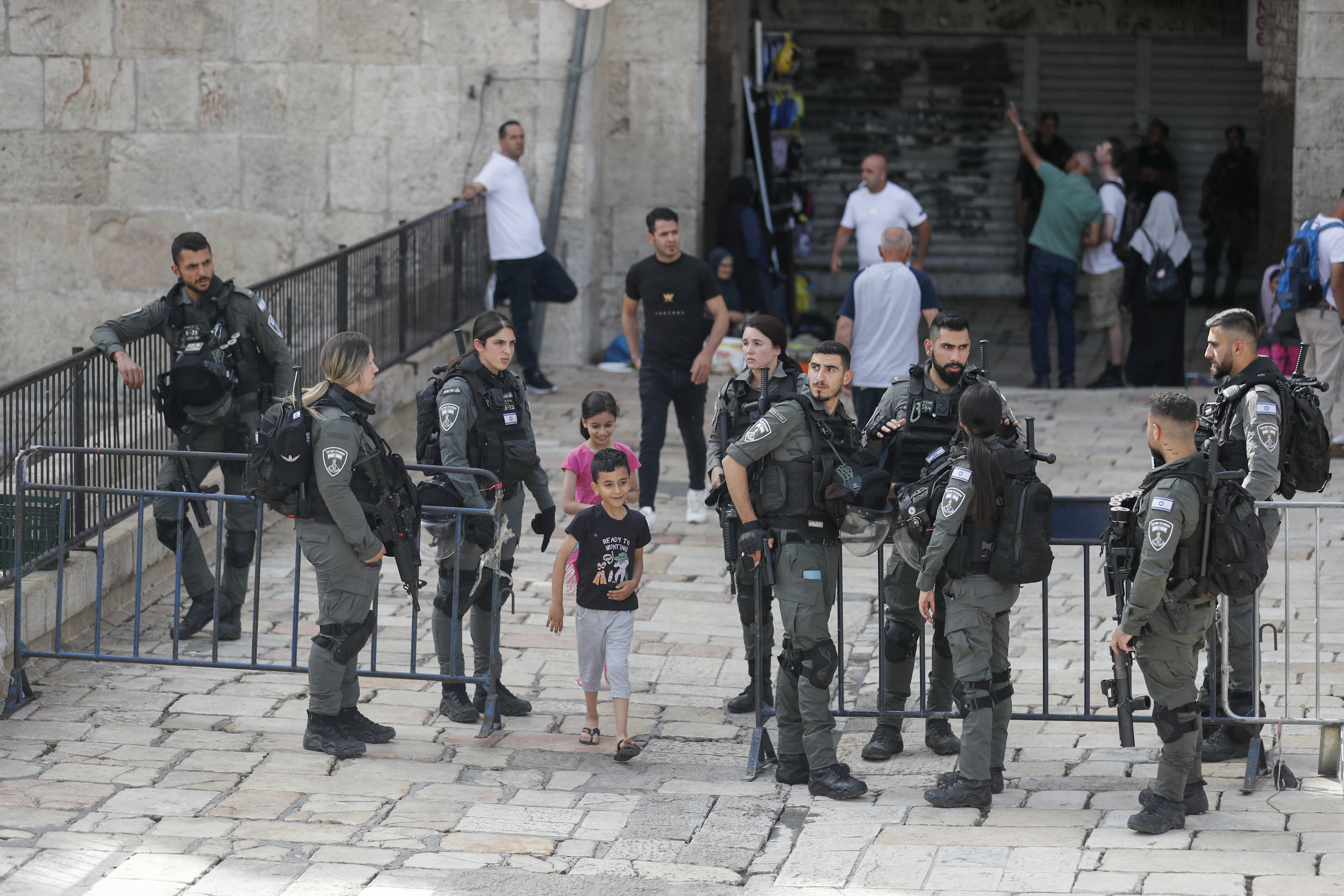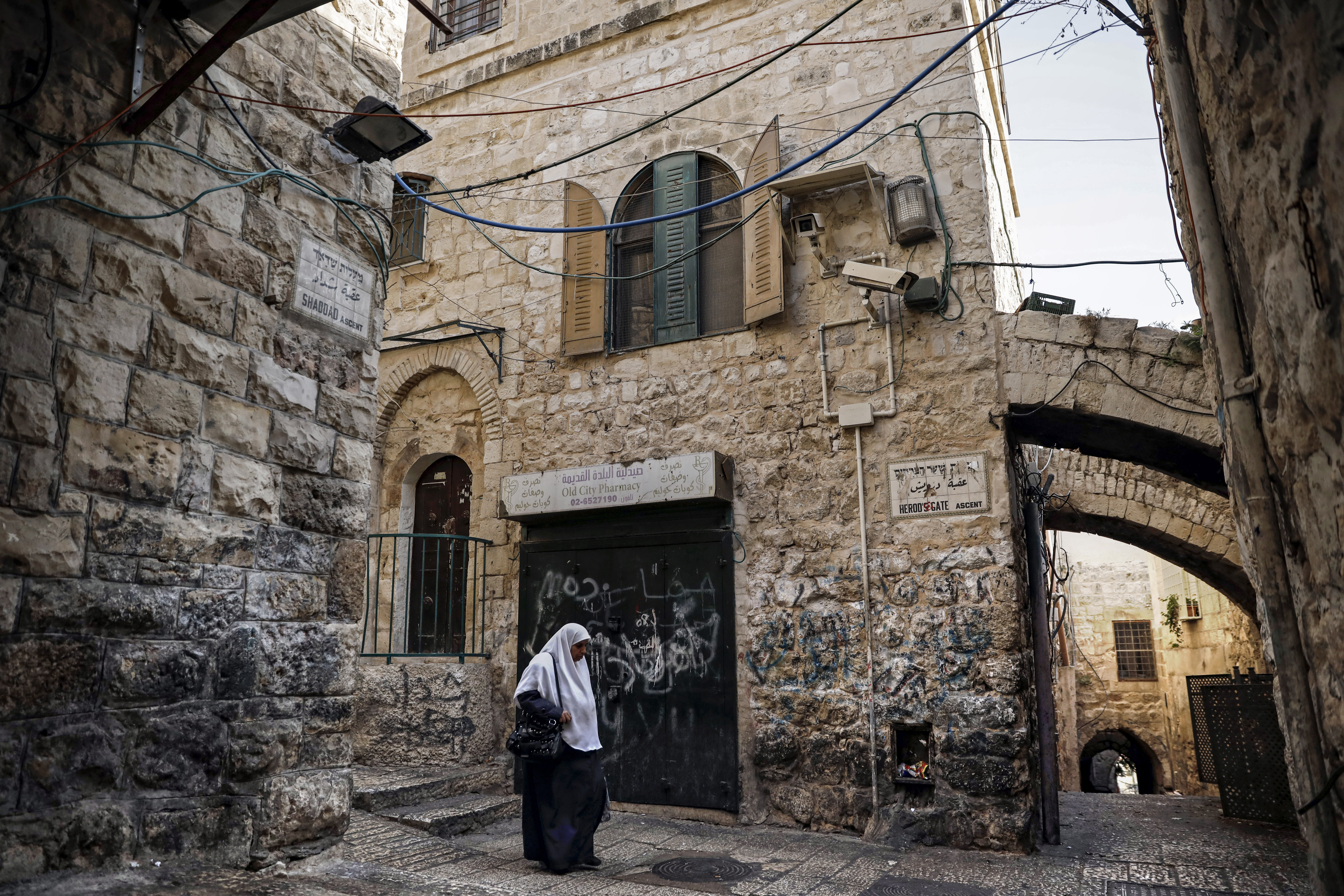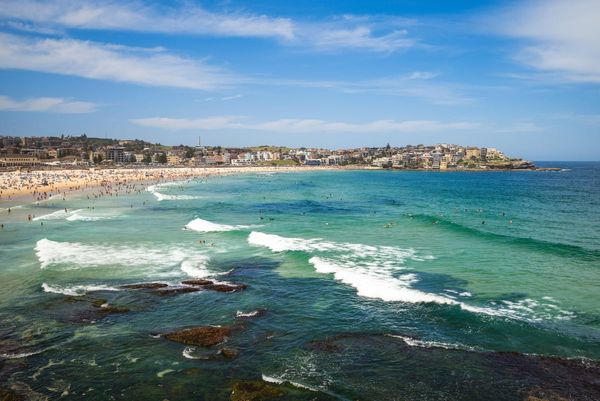
Jerusalem – Days before the far-right Jerusalem “flag day” march, tensions are high all over Israel, the occupied West Bank, and the blockaded Gaza Strip, threatening to disrupt the ceasefire reached between Palestinian Islamic Jihad and Israel on Saturday after at least 33 Palestinians were killed in a four-day Israeli bombardment. One Israeli was also killed by Palestinian rocket fire.
March organisers expect record numbers – as many as 100,000 – to participate in the parade, which celebrates the capture in 1967 of East Jerusalem and its subsequent occupation, or what the Israeli government refers to as the “reunification” of Jerusalem.
Thousands of young Orthodox Jewish men are expected to provocatively parade through the Old City’s Muslim Quarter – in the past, this has led to repeated attacks against Palestinians.
Here’s a closer look:
History and symbolism
The Jerusalem flag march “is one of the strongest examples of racist nationalistic and state-sponsored celebrations”, according to Aviv Tatarsky, a researcher at the human rights organisation Ir Amin.
While the route of the march has changed over the years, originally designed to recreate the path of the Israeli soldiers who captured the Old City on June 7, 1967, the current route winds its way through the Damascus Gate and the heavily populated Muslim Quarter.

Even though entering the Al-Aqsa Mosque compound is not a formal part of the march itself – and the march route deliberately enters the Old City via the Zion and Damascus gates, and not the Lions’ Gate near Al-Aqsa Mosque – various groups calling for the establishment of a Jewish temple on the site hope to encourage a record number of Jews to enter the Al-Aqsa compound on Jerusalem Day.
Most of the participants belong to the “Religious Zionist” camp of Orthodox Jewry – who see messianic meaning to Israel’s capture of Jerusalem in 1967. But, despite the havoc that has been caused by attendees during the last few years, one of the youth organisers, Yekutiel Epstein, says the march “has no interest in dispersing racism, but rather is about love and thanking God for returning us to the Land of Israel after 2,000 years of exile”.
One of the non-religious groups participating is La Familia, a far-right supporter group associated with the Beitar Jerusalem football club, which is infamous for advocating that the club remain “forever pure” without any Palestinian or Muslim players.
According to David Mizrahi, a Jerusalem native and co-founder of La Familia: “Jerusalem day used to be, for many years, about going to the [Western Wall] and praying … at some point, it became a nationalistic celebration.”
Mizrahi, who has since left the group and lectures against racism at Israeli schools, admits that he and La Familia used the march to intimidate families in the Muslim Quarter. “We would knock on the doors … to send the message [that] ‘We are the [true] owners.’”
Why is the march allowed to go ahead?
In 2015, noting the increased presence of far-right groups directing hate towards Palestinians, several Jerusalem human rights organisations petitioned the Supreme Court of Israel to re-route the parade away from the Muslim Quarter.
Itay Mack, who represented the petitioners against the City of Jerusalem, the police, and the organisers of the march, describes the Israeli Supreme Court justices being “shocked” at the evidence of racist violence he collected.
“The Supreme Court is used to being presented evidence of violence against Palestinians” in the West Bank, said Mack. “The court should not have been surprised by the violence in the march [even in Jerusalem] since these are the same groups of the extreme right and the ‘hilltop youth’ who commit terrorism in the West Bank that the judges are familiar with but tend to ignore.”

Although the court decided for the right of Jewish organisers to march through the Muslim Quarter, the petition resulted in some minor changes on the ground.
Prior to 2015, “ultranationalist organisers would harass Palestinian shopkeepers from early in the morning of the march well into the night”, Mack said, while currently “the Israeli police enforces a time limitation for the march in the Old City”.
The court also ruled that inciteful chants, such as “death to Arabs” are a “red line”, though Mack notes that little effort is made to stop them. “With the court decision [ruling against us], we are out of legal options to oppose the hateful march.”
The court justified its ruling under the pretext that the event could be held safely with sufficient policing – a reported 2,000 police officers will be on duty with 1,000 other security personnel. That perspective, Tatarsky said, “[looks] at violence as an outcome of the march … [while] the march itself is extremely violent against tens of thousands of Palestinians in the Old City and the surroundings” who are forced out of their city for the day.
Palestinian perspectives
Palestinian shopkeepers and residents in the densely populated Old City Muslim Quarter react with exasperation and frustration when asked about the “flag march”.
Several, who declined to speak on the record about the subject, view it as a “needless provocation” and listed examples of vandalism that were not followed up on by the Israeli police, despite the presence of “cameras everywhere”.
Hazem Qassem, a spokesman for Hamas, the Palestinian group that controls the Gaza Strip, said the march was inciteful, and would force the group to respond to the “[Israeli] attempt to change and enforce a Jewish identity on the city of Jerusalem … which includes Muslim and Christian holy sites”.
While it remains unknown if the “flag march” will trigger a new round of fighting between Israel and Palestinian Islamic Jihad or Hamas, there are few visible efforts to calm tensions.
Instead, it is being reported in Israeli media that the far-right ministers Itamar Ben-Gvir and Bezalel Smotrich will attend the march, as they have done in past years.







